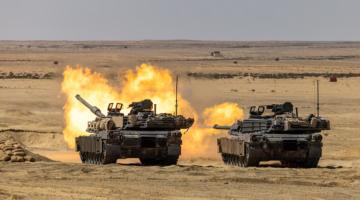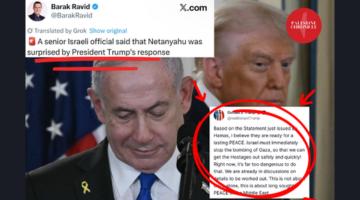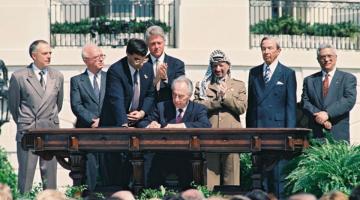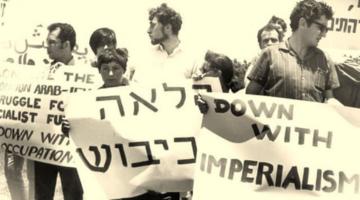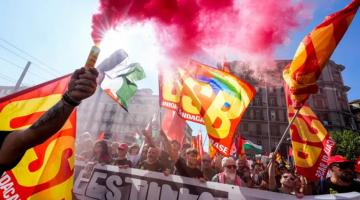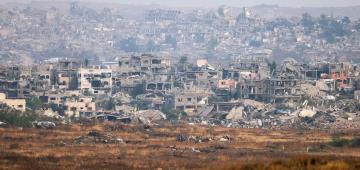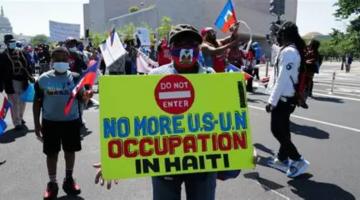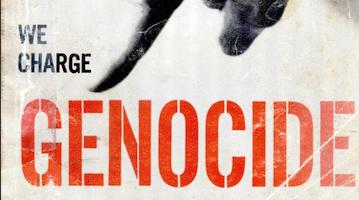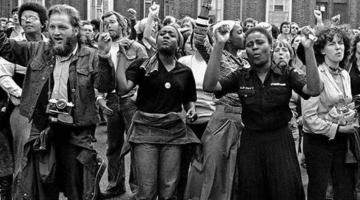More than 100,000 Palestinians have been forced to flee in northern Gaza since mid-May. Gaza City, 3 June. Omar AshtawyAPA images
Nowhere is safe in Gaza. US-backed Israeli forces are turning aid centers into slaughter zones, targeting starving civilians as they desperately search for food and medicine.
Originally published in Electronic Intifada.
The following is from the news roundup during the 5 June livestream. Watch the entire episode here.
Israeli forces massacred more than 400 Palestinians and injured more than 2,000 in airstrikes, tank shellings, drone attacks and with sniper fire between 29 May and 4 June.
Attacks continued against hospitals, medical clinics, residential buildings, schools turned into shelters and inside humiliating death traps engineered by US mercenaries and Israeli soldiers under the guise of distributing meager amounts of snacks to millions of starving people – while real international aid remains in trucks, stuck behind the crossings, for more than three consecutive months.
Nearly 100 Palestinians were killed and 440 injured between 3 and 4 June alone, according to the Palestinian health ministry in Gaza.
On Monday, 2 June, Israeli airstrikes flattened a home in Gaza City, pinning a baby and his 5-year-old brother beneath the rubble. This clip, filmed by Al Jazeera reporter Anas al-Sharif, shows the moment the two children were rescued by Palestinian first responders and civil defense workers.
The children were placed in their father’s hands. Al-Sharif says that the 5-year-old, Karim, was trapped for hours under the rubble with his baby brother and their mother, but all were pulled out alive.
For three months, Israel has sealed the crossings, preventing international aid agencies from delivering food, water, medicine, fuel, infrastructure repair parts, and other basic essentials, engineering a full-blown catastrophe of starvation.
On 27 May, Israel and its US partners opened its four so-called aid distribution centers as part of the private, shadowy Gaza Humanitarian Foundation, branding it as an effort to distribute aid to two million starving Palestinians.
Since then, more than 100 Palestinians have been killed and hundreds injured while seeking meager portions of food aid.
The Gaza government media office said on Tuesday, 3 June, that the Israeli occupation is turning these aid distribution centers “into mass death traps and bloodbaths.”
That day, at least 27 Palestinians were shot and killed and more than 90 were wounded.
Two brothers, 15-year-old Ahmad Muhammad Zeidan and 17-year-old Abdul Rahman Zeidan witnessed the murder of their mother, Reem, while they were trying to get an aid parcel on Tuesday.
Abdul Rahman said that he was next to his mother when she was shot in the head by Israeli sniper fire on the crowd.
When they thought it was ok to keep moving, Abdul Rahman said, “My mom told me to duck and walk [forward]. We walked, ducking our heads, when suddenly she started saying, take care of your brother. The sniper had shot her in the head.”
Fifteen-year old Ahmad said that “we didn’t know what was happening. We’re just children. Civilian children. There were no fighters among us. No one from our side attacked the Zionists. Yet the Zionists started bombing us everywhere. Don’t go to the aid centers. You’ll lose your siblings. Don’t go.”
“For a coupon that’s not even worth 50 shekels, it’s not worth it to sacrifice our lives.”
The day before, on Monday, 2 June, at least three Palestinians were killed and 35 wounded near the so-called aid distribution point in Rafah.
And on Sunday, 1 June, Israel carried out massacres at two aid points in Rafah and in the Netzarim corridor, south of Gaza City.
Witnesses say that in Rafah, around 3:30 am, as people waited in line for the aid point to open at 6 am, Israeli forces and drones fired directly into the crowd, sparking chaos and mass casualties. At least 30 were killed on the spot.
Doctors Without Borders was part of the mass casualty response at Nasser Medical Complex in Khan Younis.
Patients told the medical group that “they were shot from all sides by drones, helicopters, boats, tanks and Israeli soldiers on the ground.”
Nour Alsaqa, a communications officer with Doctors Without Borders, stated: “The hospital corridors were filled with patients, but unlike what I have witnessed before, where most of the patients were women and children, today it was mainly men. They lay in their beds in the hallways because the rooms are already packed with injured people. They had visible gunshot wounds in their limbs, and their clothes were soaked with blood. They looked shattered and distraught after trying to secure food for their children, returning instead injured and empty-handed.”
Mansour Sami Abdi, a father of four, described the chaos to Doctors Without Borders.
“People fought over five pallets. They told us to take food – then they fired from every direction. I ran 200 meters before realizing I’d been shot. This isn’t aid. It’s a lie. Are we supposed to go get food for our kids and die?”
Inside Nasser Medical Complex, Dr. Ahmed Abu Sweid reported on the mass casualties following the 1 June massacres.
Instagram user Ramy Nassar documented his journey under fire at one of the aid points the day before, on Saturday, 31 May.
The Gaza government media office stated on 31 May, “We affirm to the entire world that what is happening is the systematic and malicious use of aid as a tool of war, employed to blackmail starving civilians and forcibly gather them in exposed killing points, managed and monitored by the occupation army and funded and politically covered by the occupation and the US administration, which bears full moral and legal responsibility for these crimes.”
After more than 100 people were killed in the eight days since it began its operations, the private US-led mercenary firm announced that it was suspending operations for the day on Wednesday, 4 June.
The Palestinian Center for Human Rights, meanwhile, called for the total and immediate dissolution of this shadowy firm.
The Israeli army’s “insistence on maintaining this deadly aid distribution mechanism – despite the chaos it has inflicted and the consistent pattern of daily casualties and injuries – clearly indicates that the Israeli occupation forces do not intend to provide aid to Gaza’s starving population,” the human rights center stated.
“Rather, they aim to turn this mechanism into traps of death, humiliation, and dehumanization of Palestinian civilians, who have endured months of unprecedented levels of deliberate starvation.”
After the American CEO of the Gaza Humanitarian Foundation resigned before the aid points even began their chaotic, incompetent and lethal operations, a new CEO was appointed this week: Johnnie Moore, a Christian Zionist evangelical leader with close ties to both US president Donald Trump and Israeli prime minister and war crimes suspect Benjamin Netanyahu.
The Tel Aviv newspaper Haaretz reports that Moore is the president of the Congress of Christian Leaders, and holds ties with key Gulf political figures, having held meetings with Saudi Crown Prince Mohammed bin Salman during a first-of-its-kind visit to Saudi Arabia by evangelical leaders during Trump’s first term.
Moore has denied that Israel attacked and killed Palestinians seeking aid in the past week.
Hospitals bombed
Israel attacked hospitals across Gaza, as the health sector continues to be in a free-fall catastrophe, after more than 600 days of genocide and three months of total blockade.
Noted Palestinian British surgeon Dr. Ghassan Abu Sitta said that the level of the crisis is so intense that the blood bank in Gaza is now unable to accept blood donations, even as the need for blood is critical.
The Palestinian health ministry in Gaza announced that operating rooms, intensive care units and emergency rooms are experiencing a shortage of life-saving medications, medical supplies and diagnostic imaging equipment that are preventing urgent surgical interventions for wounded patients.
On 4 June, Israel drone-bombed the roof of the main building at the Al-Aqsa Martyrs Hospital in Deir al-Balah, in central Gaza, marking the 11th time the hospital has been attacked since October 2023.
On 1 June, Israeli forces bombed the Noura al-Kaabi dialysis center in northern Gaza, the only clinic serving kidney patients in the besieged north.
The health ministry said that the destruction of the clinic “poses a catastrophic threat” to the health of those in need of dialysis, the consequences of which are unpredictable, they said.
More than 40 percent of kidney failure patients have died during the last 20 months, because they have been denied access to dialysis centers, the ministry added, along with the destruction of designated clinics and nephrology departments.
On 29 May, Al-Awda Hospital in Jabaliya was emptied of its patients and staff following a two-week siege on the medical facility by Israeli forces.
Along with the forced closure of the Indonesian Hospital earlier this week, not a single hospital remains open or functioning in northern Gaza, the UN reports.
And on 5 June, Israel attacked Al-Ahli Arab Hospital in Gaza City, killing at least three journalists while they were setting up shelters to protect them from the heat, according to Al Jazeera’s Hani Mahmoud.
He said that this is the eighth time the hospital has been hit by Israeli forces since October 2023.
It reopened only two weeks ago, following a recent attack, according to Dr. Fadel Naim, who works at the hospital.
Mahmoud said that the three journalists “were reported killed on the spot, and pieces of flesh were left scattered on what once was a manicured garden at the medical facility.”
“One more journalist was reported with serious injuries and is now undergoing surgery inside the hospital with minimal supplies. There are other serious injuries due to the shrapnel. These drone missiles are lethal because they are packed with nails and pieces of metal. When they explode, they pierce through the body and cause severe bleeding,” he reported.
Shrinking areas
Amidst the massacres, the Israeli army is continuing to shrink the areas in which Palestinians live in Gaza.
The United Nations humanitarian office stated on Wednesday that the latest figures indicate that in just the past three weeks, more than 100,000 people have been forced to flee in north Gaza and the Gaza City area alone.
The UN says that while more than 640,000 people have been displaced again in the past three months since Israel broke the ceasefire, the Israeli authorities have not allowed the entry of any shelter supplies.
Doctor dies of injuries
On the 29 May livestream, we reported last week on the al-Najjar family, whose home was attacked by an Israeli airstrike on 24 May in Khan Younis.
Dr. Alaa al-Najjar, a pediatric specialist, was working at the Nasser Medical Complex when her home nearby was bombed, incinerating and killing nine of her 10 children.
Her son, 11-year-old Adam, survived, but was critically injured and remains in the ICU.
Her husband, physician Hamdi al-Najjar, survived the bombing initially, but died from his injuries on Saturday, 31 May.
Alaa and her son Adam are now the only survivors of their 12-person family left.
Highlighting resilience
Finally, as we always do, we wanted to highlight people expressing joy, determination and resilience across Palestine and around the world.
A small group of international volunteers are aiming to break the siege on Gaza.
The Madleen, a small boat, is sailing from Italy across the Mediterranean Sea and is due to reach Palestine’s coast on 7 June.
The crew is carrying with them aid for Palestinians in Gaza: baby formula, flour, rice, diapers, women’s sanitary products, water desalination kits, medical supplies, crutches and children’s prosthetics.
Aboard the Madleen is the young climate justice activist Greta Thunberg, who has been a vocal and steadfast supporter of the Palestinian liberation struggle and an activist against Israel’s genocide.
On 3 June, as the boat sailed in international waters near Greece, drones hovered over the activists’ heads. The drones were revealed to be Herons, Israeli-made surveillance drones developed by Israel Aerospace Industries and sold to Greece under a partnership with Israel that allows for potential backdoor access by the Israeli military.
Thunberg, 22, recently spoke to Middle East Eye, explaining why climate activism is interlinked with solidarity with Palestine.
Nora Barrows-Friedman is a staff writer and associate editor at The Electronic Intifada, and is the author of In Our Power: US Students Organize for Justice in Palestine (Just World Books, 2014).

